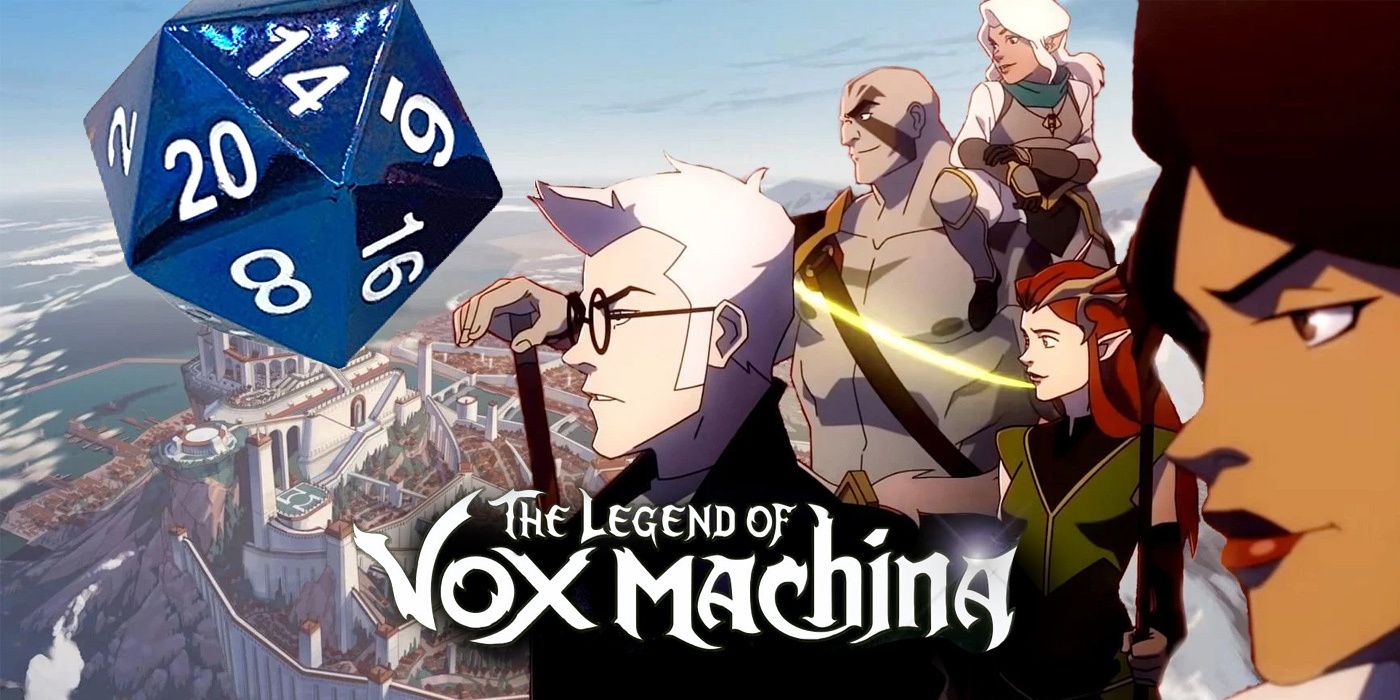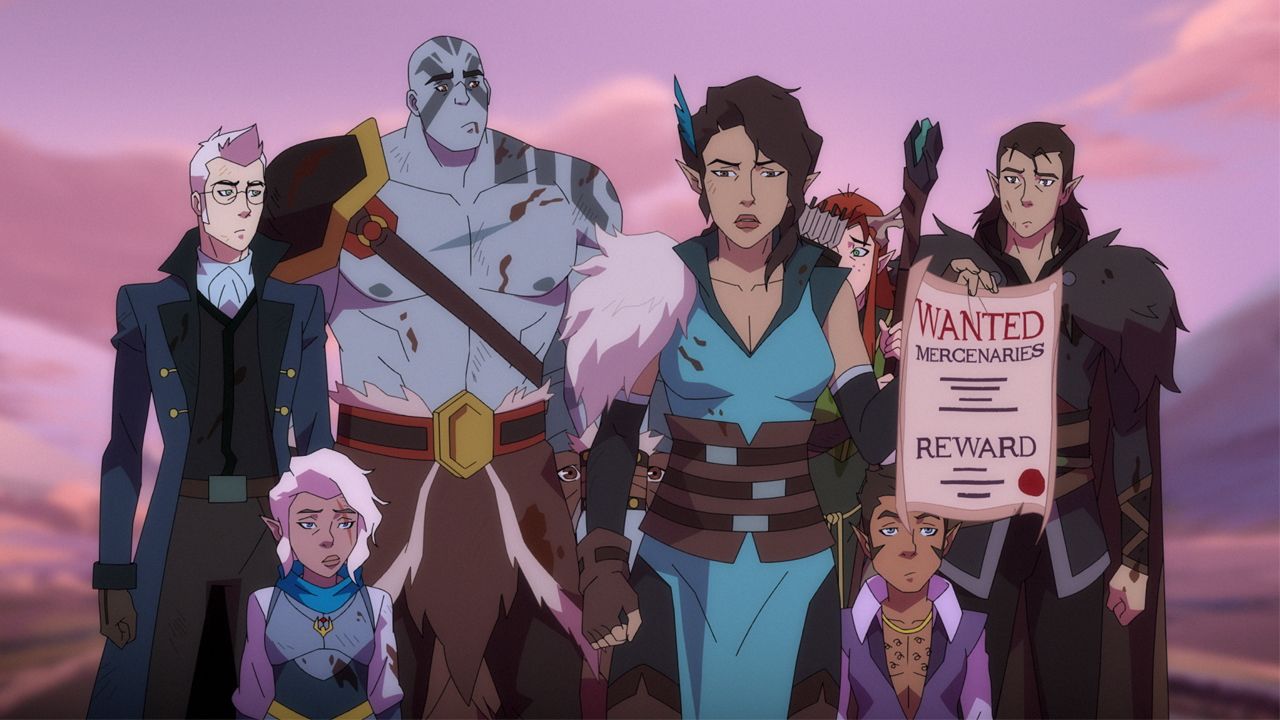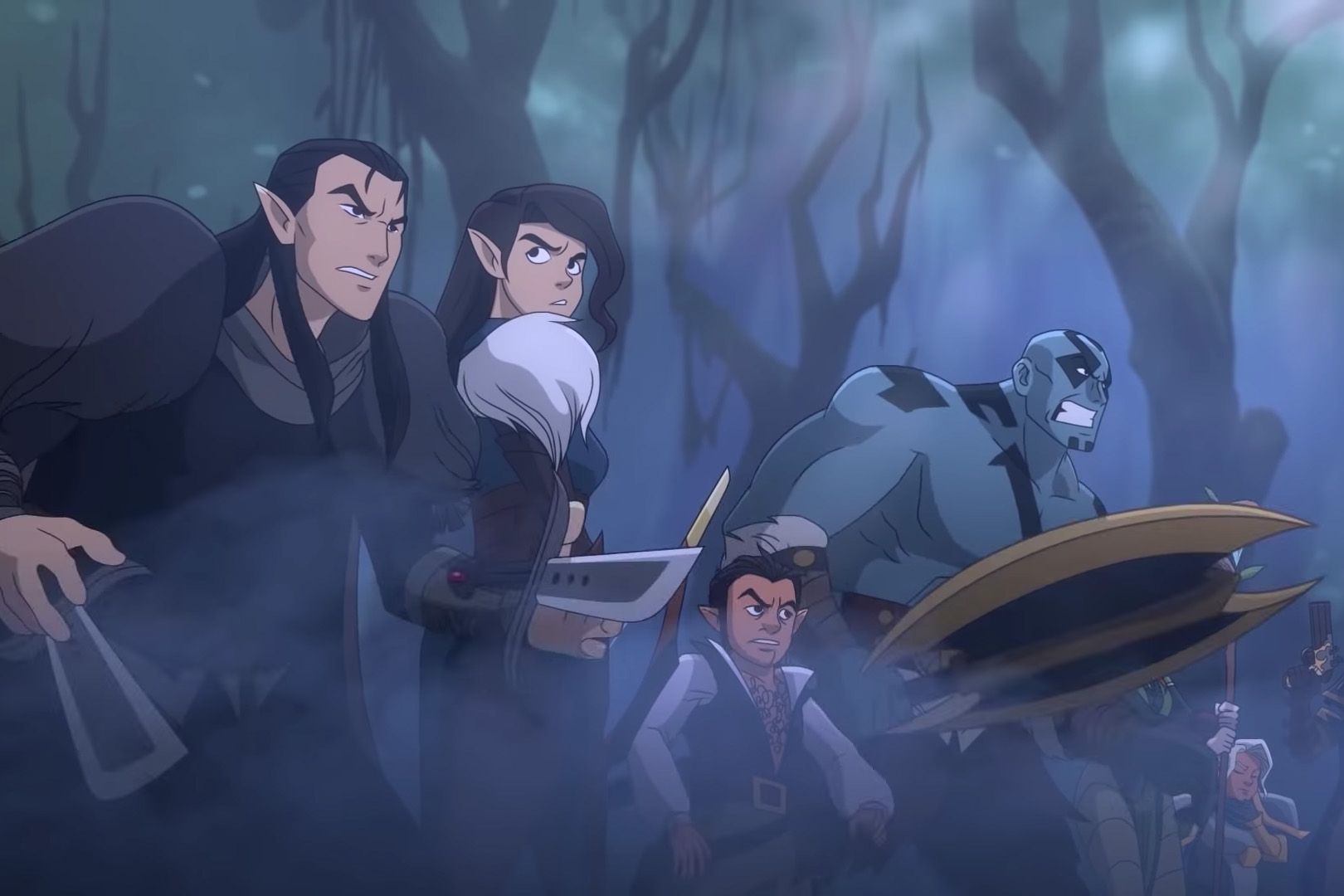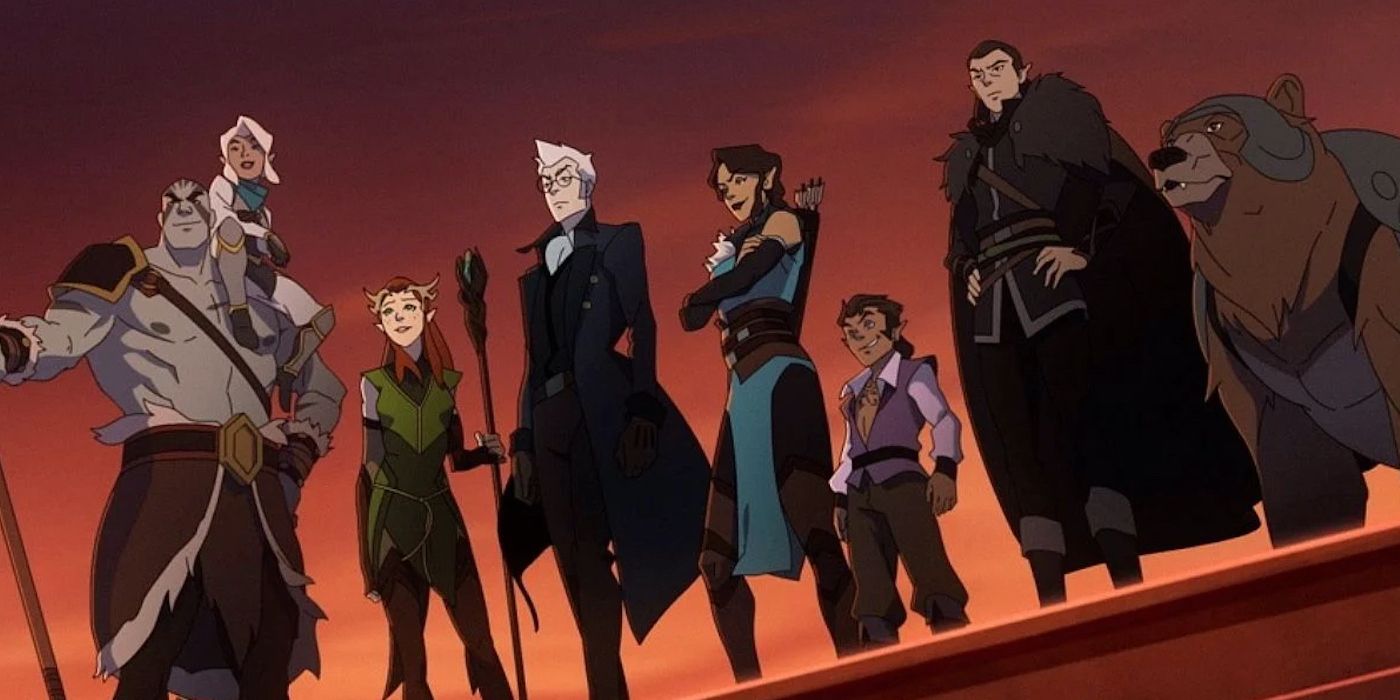Adaptations are never easy. You have to satisfy an existing fanbase with high expectations for the project while also leaving the door open for newcomers who might not know anything about your pre-existing property. It’s a balance that is hard to find, one that has been done repeatedly to various successes. The latest in the long list of adaptations is Critical Role’s animated series of their first campaign, The Legend of Vox Machina.
Critical Role started in 2015, but the humble beginnings of the web series go back to 2012 when a bunch of nerdy voice actors began playing Dungeons and Dragons around a kitchen table. That home game would become one of the most popular web series, starting humbly on the Geek and Sundry Twitch channel before leaving them in 2019 and taking off on their own.
Critical Role’s premise is simple, friends sit around a table and play Dungeons and Dragons every week. It has garnered love from millions of followers and brought new fans to the tabletop roleplaying community. In their third campaign, Critical Role is still as popular as ever, a success story like no other. And nothing is more proof of that success than the story behind The Legend of Vox Machina.
During one of their sessions, a throwaway comment about how they would love to see their campaign animated one day started all of it. That one spark created a ripple effect, something that both the cast of the show and the fans all wanted. An animated version of what they had been watching for years on Twitch. But that journey would take time and a Kickstarter that would go on to break records.
In 2019, Critical Role launched a Kickstarter, hoping to amass $750,000 to create an animated pilot that they could shop around in the hope of creating an animated version of their first campaign one day. They reached their goal within an hour, and by the end of the 45 days, they had raised 11.5 million, making it the fastest founded project on Kickstarter and the most funded project for Television and Film. That little animation project turned into an entire season, adapting their most popular arc in their campaign — the Briarwood arc. After the fundraiser's success, Amazon Prime came along and ordered an additional two episodes for the first season and renewed the show for a second season.
And then, the real challenge started. Adapting a project is always hard. You have to decide what stays and what goes, what you are trying to say with this adaptation, and what it is all about at its core. But adapting a roleplaying game is even more complicated. Dungeons and Dragons sessions aren’t short; most run about four to five hours each, and Critical Role is no different. Pair that with the fact that the adventure of Vox Machina ran for over 100 episodes, adapting the story of Vox Machina was always going to be a daunting task. At its core, Dungeons and Dragons is all about roleplaying improvising, and the whole game depends on the dice rolls. You might have the best plan, but if your dice betray you, you end up with an excellent strategy but terrible execution. So how can you portray that on screen?
The answer is simple for Critical Role and The Legend of Vox Machina. You don’t. They didn’t try to adapt a game; they decided to adapt a story — the story of Vox Machina. Sure, fans of the original campaign have an insight that others might not have, but this is not just a retelling of what happened during the initial playthrough. The creators understood that while the original will always exist, they can fix things, rework things, retell the story the way that they wish they would have done but never did. This is precisely what an adaptation should be. Not about recreating detail for detail but staying true to the original while also adapting to the new medium.
Iconic moments are still there but improved or shortened to fit the new format. Episode 7 "Scanbo" recreates the iconic moment when Scanlan (Sam Riegel) went into a house by himself and defeated all of them. While the series recreates this moment, it also adapts it to make it work in the world that they have established on our screen. These notable moments from the campaign were things that fans were waiting for and moment that defined what Critical Role would become. The most obvious one is when the party stumbled upon the Sun Tree where the Briarwoods (Matthew Mercer and Grey Griffin) hung up citizens of Whitestone and made them match the physical appearance of the group members. That was the moment everyone knew that the story Mercer was telling wasn’t like anything we were expecting.
But even with all of that, it is clear that this adaptation was a daunting task. The first two episodes of the series are proof of that. The arc the show decides to adapt was not the beginning of their story; they had been playing as these characters for quite some time before it, both on and off the stream. So, when it came time to introduce those characters, they had to condense years of story into an hour. And it shows.
The pacing is the main issue in The Legend of Vox Machina. The show moves briskly and needs to tell its story at that pace. Telling a story of hundreds of hours is different from doing it in a half-hour format. The romances are the thing that suffers the most in this new format. The romances of Critical Role spanned over hours and hours, and even then, when they started to happen, the pure shock on everyone’s face translated perfectly to what everyone was feeling. The thing is, the Briarwood arc was when these romances started to come to the forefront. Before that, most of it was in subtext and small moments, but this arc marked the explicit start of the romance between Vax (Liam O’Brien) and Keyleth (Marisha Ray).
Romance in Dungeons and Dragons isn’t new, but Vax and Keyleth’s romance opened up the floodgate for inner-party romance on the show. It was developed over a long period of time, with small moments that the show tries to recreate. Those moments help, but when Vax tells Keyleth he loves her, it doesn’t have the same emotional punch it did when Liam said those words at the table. Those rushed moments showcase how this some things get lost in translation in the adaptation process.
But this is only the beginning for Critical Role and The Legend of Vox Machina. The Briarwood arc might be over, but the first season's ending teased what is one of Vox Machina’s biggest threats, The Chroma Conclave. Fans of the campaign can get excited, while newcomers can either wait for the show to come back or watch the original content, which is the beauty of this adaptation. It creates opportunities for people to get into tabletop games or live gameplay, it opens everyone’s eyes to how much fun Dungeons and Dragons can be.




